| |
|
A Crane was Blown into the Tiger
Enclosure by Strong Winds |
|
A Crane put
two Tigers to shame
when it fought them off at a Zoo in China |
|
Captured on Camera
The Crane can be seen standing its ground as the large cats at
the Fuyang Wildlife Park begin circling around it.
Horrified tourists watched as the young Tigers chased the bird into the
corner of the enclosure. |
|
The Crane reacts by flapping its wings hard and
flying away.
But it isn't long before the two Tigers catch up with it.
Everything seems to be lost for the Crane as the big cats mount their
attack.
But from out of nowhere the bird fights back.
Spreading it wings and standing its ground, the Crane actually moves
towards the Tigers and chases them away.
Later the big cats begin circling and close in to attack once more.
But again, the Crane is able to defend itself and actually causes one of
the Tigers to retreat with a jump. |
|
The Crane was Inspected by Four Tigers
Two were Interested in Making it Dinner |
The Bird is Forced to Retreat
Flying Across the Enclosure as the Tigers Chase After |
|
Two Tigers Work Together - Chasing the Crane to the
Corner of the Enclosure before Going to Attack |
|
Remarkably the Crane is able to Fight Off the Two
Tigers after it Beats its Wings and Charges at Them |
|
According to the Zoo Keepers, the Crane received
only Minor Injuries and is Recovering |
|
A legendary Special Forces commander was quietly
forced to leave the U.S. Army after he admitted to a love affair with a
Washington Post war correspondent, who quit her job to secretly live
with him for almost a year in one of the most dangerous combat outposts
in Afghanistan |
U.S. Army Special Operations Command never publicly disclosed that
highly-decorated Green Beret Major Jim Gant was relieved of command at
the end of a harrowing 22 months in combat in March 2012.
His commanders charged in confidential files that he had "indulged in a
self-created fantasy world" of booze, pain pills and sex in a tribal
village deep in Taliban and al Qaeda country with his "wife," journalist
Ann Scott Tyson.
“We did fall in love, I would say over the course of about a week,”
Tyson told ABC News in an interview, recalling that Gant asked her to
marry him within a few days of meeting each other in 2010. She laughed
him off at first, but eventually he won her over.
By the time he was yanked out of Afghanistan two years later because of
his relationship with Tyson, Gant also had won over three Pashtun tribes
with substantial influence throughout Kunar province. Top commanders had
tasked him with turning the tide of a conflict America was losing, and
in his corner of the war, Gant was winning.Despite being stripped of
his Special Forces honors, busted down to captain and forced to retire
in a case hushed up by the Army for two years, Gant said everything he
achieved in waging an unconventional fight against the Taliban -- which
Tyson says she helped him to do -- was worth the punishment and
professional blows. |
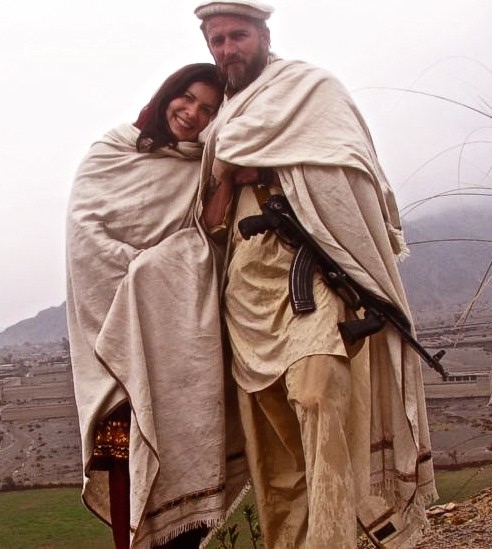 |
| “We both knew that there was a lot of risk in doing what we did." |
Jim Gant - Green Beret Major |
And I would do it again,” Gant told ABC News this month in his first
television interview. “It was extremely unconventional, yes, to say the
least.”
As to the wrongdoing he has since admitted to, he said the results he
got were proof that breaking the rules worked.
“I never left the battlefield defeated. I never lost a man. Well over 20
awards for valor for the men that I fought alongside. We went after ‘em
every single day. I brought all my men home. That’s it,” Gant said. But
it was a long, hard fall for a visionary still called “Lawrence of
Afghanistan” by two of the war’s now retired top commanders, Army
Gen. David Petraeus and Navy SEAL Adm. Eric Olson, in honor of the
British officer T.E. Lawrence who led the Arab Revolt a century ago.
Gant, who idolizes Lawrence, said he's honored by the comparison.
Ann Scott Tyson and Jim Gant, who married last year, have come forward
to tell their tale in her new book, "American Spartan: The Promise, The
Mission And The Betrayal of Special Forces Major Jim Gant.” |
Four years ago, some influential, high-level military officers
believed that Gant held the key to winning the war in Afghanistan, but
as the book lays out in excruciating detail, his heroism and vision were
all but forgotten by the commanders who once praised him, save for Olsen
and Petraeus.
“He clearly had grit. He had guts. He had intelligence,” Petraeus, who
became the Afghan war’s commander in 2010, told ABC News in a rare
on-camera interview. “He is one to whom we owe a debt of gratitude, even
recognizing how things ended for him. Folks make mistakes, obviously.” |
|
Former Special Forces Maj. Jim Gant, center,
insisted that his troops dress like locals in Afghanistan to better win
Afghan trust |
|
India: Muslims Strike Site Holiest
to Buddhism with Nine Serial Explosions |
|
Terror
Strikes Bodh Gaya
Mahabodhi Temple
Sunday July 7th, 2013
Bodh Gaya Buddhist Temple, around 10 km from Gaya and
100 km. from capital Patna, is world famous. Lord Buddha had attained
enlightenment here under the Mahabodhi tree within the temple premises.
According to Gaya Police, the blasts took place in quick succession
between 5.30am and 6am in the temple complex and near the Mahabodhi
tree. There were four blasts inside the temple premises. Fortunately,
there was no damage to the Bodhi Tree or the main temple structure. One
of the blasts took place just under the enlightenment tree causing
partial damage to the Buddha footprints in the shrine premises.
Bihar Police suspect the involvement of Indian
Mujahideen in the temple blasts. |

Buddha Meditating Under the Mahabodhi Tree |
Two tourists, including a monk from Myanmar, have been injured in
the blasts.
Tibetan spiritual leader the Dalai Lama makes frequent trips to Bodh
Gaya and Sri Lankan President Mahinda Rajapaksa had visited it six
months back. A total of 52 countries have established their monasteries
here. |
|

Bodhi Tree at Bodh Gaya Temple - India |
|
Corruption in Afghanistan can be astonishing at
times. That’s because Afghans consider stealing from foreigners to be a
laudable goal and this is a tradition that goes back thousands of years. |
 |
An excellent example of this can be seen by a recent
effort by some Afghan customs officials to scam the U.S. government out
of over $70 million. This was basically an organized extortion effort
carried out by customs officials. It first appeared in June, when
American equipment (vehicles and cargo containers) leaving the country
were halted at the Afghan border by demands for a document proving the
equipment had entered Afghanistan. If this document was not available
(and it never was), payment of a $1,000 fine (per violation) would allow
the item to pass. This in itself was absurd because a 2002 agreement
between Afghanistan and the United States exempted American military
equipment from anything of this nature. Senior customs officials replied
that the 2002 agreement was unfair and no longer applied. At this point
the situation was becoming surreal and negotiations continued as U.S.
officials climbed the Afghan government chain of command, finding that
the original scammers had, as is usually the case, promised all their
superiors a piece of the action and all were doing their best to make
the extortion plan work. Finally the U.S. agreed, but with the
understanding that these fines could be paid but that the amount would
be deducted from foreign aid, plus large processing fees and fines.
Sensing the game was up, the scam collapsed. |
| Many of these scams succeed, again and again. One of the best
examples of this is the “dead goat scam” in which villagers lie about
who was killed by a NATO bomb in order to obtain more compensation
money, and to avoid Taliban retribution. This one is quite common and
works like this. Often, when a smart bomb gets dropped in an isolated
location (which describes most of Afghanistan), and there is any chance
of civilian casualties the locals will often make a fuss about seeking
to find who was hurt or killed. The village elders insist that outsiders
(as in U.S. military personnel investigating the damage) stay away
during this trying time. Even the foreign soldiers and Afghan police are
put off (after a quick search for Taliban bodies, documents, and
equipment is completed). Being good Moslems, the villagers bury the dead
before sunset of the same day. The next day, the elders will claim as
many civilian dead, killed by smart bombs, as they think they can get
away with. Sometimes additional graves get a dead goat or other animal,
so the proper stench permeates the mound of earth. Digging up graves is
also against Islamic law, so the elders know the foreign troops have to
take their word for it. The elders also know that the foreign troops,
depending on nationality, will pay $1,000-$5,000 compensation per dead
civilian. Not only is there a big payday, but the Taliban appreciate the
bad publicity directed at the foreigners and usually show their
appreciation by cutting this village or valley some slack in the future.
The villages encourage this by offering the local Taliban a cut of the
compensation money. |
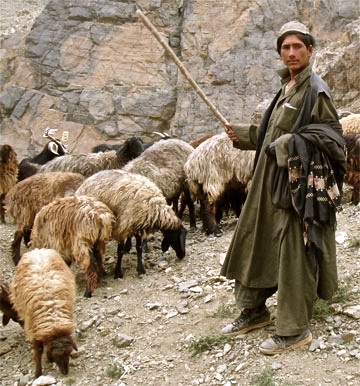 |
| This scam works because there aren't many public records
in Afghanistan. The only ones who know exactly who lives in a village
are the people there and the elders speak for everyone. Investigators
have a hard time interrogating individuals because the elders, and
everyone there, has a vested interest in not being found out. Sometimes
the elders get greedy. For example, despite an intensive investigation
into a 2008 bombing in Azizabad (outside Herat), the villagers got paid
for over 90 dead. Investigators, piecing together what information they
could, were certain that there were only 15 dead civilians (plus
Taliban). But you can't touch the graves, and even questioning the
veracity of the claims gets you howls of indignation. |
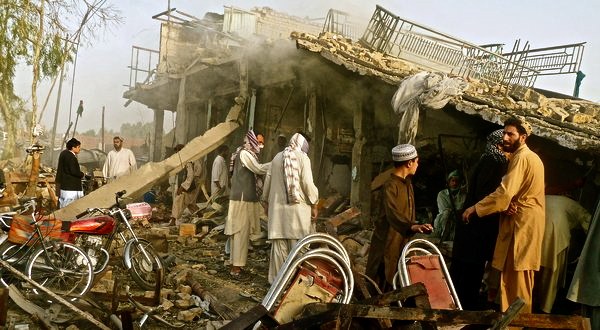 |
 |
 |
The Muslims are converting one of the most important monuments of
Christianity, the 6th-century Church of Hagia Sophia, into a mosque.
Tens of thousands of Hindu temples have been destroyed by Muslims."
“We aren’t treated as human beings,” Sikh businessman Amrit Singh said
as he sat in his small grocery shop in the Kabul neighbourhood of Shor
Bazaar. “When we are alive, we are disrespected, insulted and beaten….
And when we take our dead to the crematorium, which is our personal
property, they won’t let us burn the bodies, saying it stinks.”
“Do we have any rights in this country or not?” the 45-year-old asked.
Hindus and Sikhs form a miniscule community in today’s Afghanistan.
Historically playing an important role as traders and entrepreneurs,
they lived in Afghanistan in relative harmony for hundreds of years,
mostly in the capital Kabul and in the southeastern Khost province.
According to Avtar Singh, chairman of the national council of Hindus and
Sikhs, the community now numbers only 395 families. Before the collapse
of the pro-Soviet regime in 1992, he said, there were around 200,000
people from the two communities.
During the civil war that followed, many sought refuge in other
countries, India in particular. For those who remained, things got worse
under the Taleban government of 1996-2001. Their freedom to practice
their religion was restricted, and cremation was banned altogether.
Although that ban is no longer in place, Avtar Singh said funeral rites
remained a major issue, noting public opposition to the use of the
120-year-old crematorium in Qalacha, southeast of Kabul.
Anarkali Kaur Honaryar, a Sikh member of the upper house of parliament,
says she has raised the cremation issue at the highest levels. |

Afghan Hindu |
| “I have pursued [the Qalacha] issue with government officials
myself,” said Honaryar, who has been the Senate’s only non-Muslim member
since 2010. “They have been cooperative. I believe that certain
political elements and foreign meddling are creating problems for the
Hindus and Sikhs, since we didn’t use to have problems with our Muslim
brothers.” Many Hindus and Sikhs, however, say they face threats,
insults and even physical violence from their neighbours.
“Our women can’t go out,” said Bajan Singh, who has a grocery shop in
Kabul. “When our children go to school, they are insulted by their
classmates for being Hindu. A number of our Hindu brothers have been
beaten and their money stolen. All of our rights have been trampled on.
I wish [the government] would move us to some other country.”
Hindus and Sikhs living in Kabul said moving to new homes would not
solve their problems, and they would face more security threats if they
were outside the capital.
“We aren’t safe in the heart of Kabul even with all its police and
laws,” resident Manpal Singh said. “How are we going to be able to live
in a desert 20 kilometres outside from the city? What will the people in
[other] villages do to us? Was there nowhere else in Kabul, so that they
had to send us to deserts and mountains?”
Yet some people still have fond memories of a time when the Muslim and
Hindu communities lived peacefully together.
“We shared our happiness and grief,” said Badshah, a Muslim shopkeeper
in the town of Khost. “When we go to India now, we stay in their homes.
They are proud Afghans. They are hospitable. They worked alongside us to
address problems. I miss them.”
Samteral, a Hindu from Khost currently living in Kabul, said, “We were
so friendly with our Muslim brothers that we never even thought about
who we were or who they were. We were all the same, Afghans.” |
|
The United States Military is Easing
its Uniform Rules to Allow Religious Wear
Including: Turbans, Skullcaps, Beards and Tattoos |
| Sikhism recognizes God as the only
One. He who is the Creator of the Universe, fearless, not subject to
time or space, and does not take birth or die. Sikhism clearly states
that God does NOT take birth as a human. Furthermore, Sikhism does not
recognize any other gods, goddesses and deities except the One Supreme
Being. Sikhism began as a peaceful religion, and tolerance always
remained one of the fundamental tenets. However, religious persecution
led to the development of a martial tradition.
In 1857, the Indian Mutiny erupted. By that time, the British had
significantly crushed all resistance to their rule in the Punjab. Sikhs
who had collaborated with the British had been fully established as the
leaders of the 'new' Sikh nation. Thus, in 1857, the Sikhs greatly
assisted the British in crushing the mutiny. |
 |
|
The Military is Stating a Commitment to Protecting Religious Liberty
The new policy, will extend to all religions recognized
by the US military across all branches
Muslim, Sikh, Jewish and Wiccan soldiers, marines,
sailors and airmen can now request exemptions to strict military uniform
and grooming policies. The US military counts nearly 3,700 Muslims and
1,500 Wiccans among its ranks.
Amardeep Singh, co-founder of the Sikh Coalition, an advocacy group,
described the new Pentagon measure as "a step forward" but said it still
represented uncertainty for Sikh Americans, whose religion requires men
to wear turbans, beards and long hair. |
"Death is a privilege for the brave, if they die
for a noble cause"
Guru Nanak
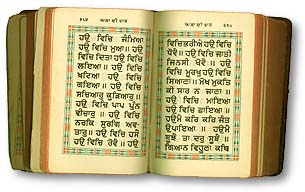
|

Guru Nanak |
| Service members' requests for a religious accommodation will be
weighed on a case-by-case basis to ensure they do not impact "mission
accomplishment, unit cohesion, and good order and discipline", Lt Cmdr
Nate Christensen. And appeals to be allowed to wear beards or special
apparel, for example, may be denied if they hinder the safe operation of
weapons or military equipment, such as helmets or protective masks. |
|
For more than 800 years scholars have pointed to the
dark augury having to do with "the last Pope." The prophecy, taken from
St. Malachy's "Prophecy of the Popes", is among a list of
verses predicting each of the Roman Catholic popes from Pope Celestine
II to the final pope, "Peter the Roman," whose reign would end in the
destruction of Rome. |
 |
First published in 1595, the prophecies were attributed to St.
Malachy by a Benedictine historian named Arnold de Wyon, who recorded
them in his book, Lignum Vitæ. Tradition holds that Malachy had been
called to Rome by Pope Innocent II, and while there, he experienced the
vision of the future popes, including the last one, which he wrote down
in a series of cryptic phrases. According to the prophecy, the next pope
(following Benedict XVI) is to be the final pontiff, Petrus Romanus or
Peter the Roman. The idea by some Catholics that the next pope on St.
Malachy's list heralds the beginning of "great apostasy" followed by
"great tribulation" sets the stage for the imminent unfolding of
apocalyptic events, something many non-Catholics would agree with. This
would give rise to a false prophet, who according to the book of
Revelation leads the world's religious communities into embracing a
political leader known as Antichrist.
In recent history, several Catholic priests--some deceased now--have
been surprisingly outspoken on what they have seen as this inevitable
danger rising from within the ranks of Catholicism as a result of secret
satanic "Illuminati-Masonic" influences. These priests claim secret
knowledge of an multinational power elite and occult hierarchy operating
behind supranatural and global political machinations. Among this secret
society are sinister false Catholic infiltrators who understand that, as
the Roman Catholic Church represents one-sixth of the world's population
and over half of all Christians, it is indispensable for controlling
future global elements in matters of church and state and the
fulfillment of a diabolical plan they call "Alta Vendita," which is set
to assume control of the papacy and to help the False Prophet deceive
the world's faithful (including Catholics) into worshipping Antichrist.
As stated by Dr. Michael Lake on the front cover, Catholic and
evangelical scholars have dreaded this moment for centuries.
Unfortunately, time for avoiding Peter the Roman just ran out. |
|
 |
 |
|
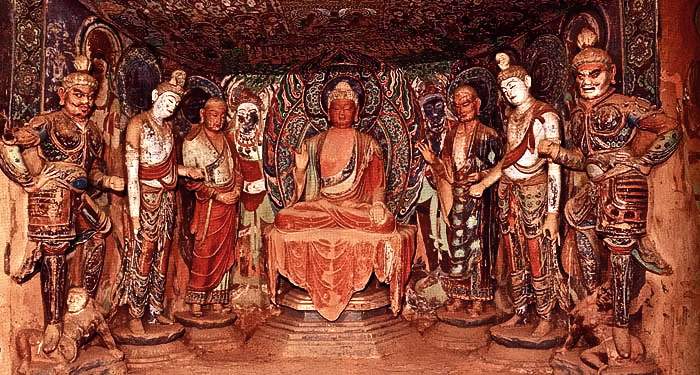 |
| Among china’s greatest art treasures are the Buddhist caves near
Dunhuang, an oasis on the fabled Silk Road that once linked China and
Europe. Their ancient frescoes, sculptures, and other relics date as far
back as A.D. 430 and have survived wars, environmental damage,
antiquities hunters, and the chaotic Cultural Revolution. But their
biggest threat today is tourism. |
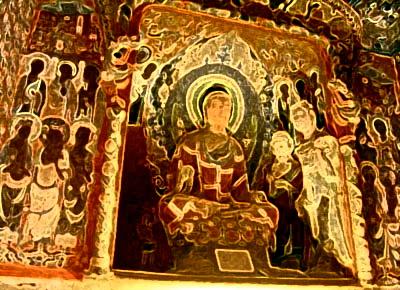 |
The UNESCO World Heritage site—which includes more than 700 caves,
2,400 clay sculptures, and 150,000 square feet of frescoes—has an
optimal capacity of 3,000 people per day, but up to 8,000 visited the
caves daily during holidays this year. The caves, also known as the
Mogao Grottoes, have fragile ecosystems, and the buildup of humidity and
carbon dioxide from visitors’ breath can lead to flaking and
discoloration of the delicate wall paintings.
In a bid to help preserve the caves, the Dunhuang Academy has settled on
an innovative strategy: digitize them. The academy has been working with
the Andrew W. Mellon Foundation and Northwestern University to create a
digital archive of the caves using a camera with a billion-pixel
resolution. The results will be used in the academy’s planned $40
million visitor center—slated for completion next year—which will
present virtual tours of the caves to save the real sites from wear and
tear. The scope of the project is daunting. It takes 20 minutes to
record a 30-square-foot fresco, and there are 492 caves with murals
inside. |
Recently the Arthur M. Sackler Gallery in Washington, D.C., offered
a tantalizing glimpse of the final product. Donning 3-D glasses,
visitors were transported across time and space into a “virtual”
Dunhuang. The exhibit digitally re-created a single grotto, known as
Cave 220, which boasts early Tang paintings from approximately A.D. 642.
The 3-D, interactive experience is flooded with vivid color, entrancing
close-up details, and moving images of flying bodhisattvas riding
mythical animals.
One of the most popular features is the “magnifying glass,” which can
zoom in on, say, a zither depicted in a mural. The instrument appears to
pop out of the wall, enlarge, and then rotate in space as zither music
plays in the background. Visitors can also “flip” back and forth between
an intricate Tang-dynasty mural and a later, cruder Sung-dynasty fresco,
which had hidden the original painting until 1943. |
|
 |
|
 |
Up until now, one of the major barriers to the rebuilding of the
Jewish Temple in Jerusalem has been the lack of a red heifer. A
qualified red heifer has not been seen in the land of Israel
for nearly two thousand years, and without one it would not be possible
to resume Temple worship. But now a candidate has been found that could
change everything. The Temple Institute in Jerusalem has released
stunning video footage of a red heifer that they believe meets the
Biblical requirements. This red heifer was born in the United States,
and the owners of the red heifer contacted the Temple Institute in order
to receive instructions about how to care for it. It is hoped that this
red heifer will eventually be transported to the land of Israel and be
used for the purification of the priests and the vessels that will be
used in a rebuilt Jewish Temple.
This is a very big deal, because without a red heifer the Temple would
never be rebuilt. So needless to say, the video footage that you are
about to see is creating quite a stir in Jewish communities throughout
the world. |
 |
| The Temple Institute contacted a documentary filmmaker to film this
red heifer, and this video was just released to the public earlier this
month… |
| If you are not familiar with the Temple Institute, it is an
organization located in the heart of Jerusalem that is dedicated to
making preparations for the rebuilding of the Jewish Temple. The
Institute has created a whole host of items that are intended to be used
in a future Temple including priestly garments made to Biblical
specifications, a seven-branched Menorah made of pure gold, a golden
Incense Altar and a golden Table of Showbread. |
The Temple Institute (in Hebrew, Machon HaMikdash), founded in 1987,
is a non-profit educational and religious organization located in the
Jewish quarter of Jerusalem’s Old City. The Institute is dedicated to
every aspect of the Biblical commandment to build the Holy Temple of G-d
on Mount Moriah in Jerusalem. Our short-term goal is to rekindle the
flame of the Holy Temple in the hearts of mankind through education. Our
long-term goal is to do all in our limited power to bring about the
building of the Holy Temple in our time. Thus, the Institute’s efforts
include raising public awareness about the Holy Temple, and the central
role that it occupies in the spiritual life of mankind. The many areas
of activities conducted by the Institute combine research, seminars,
publications, and conferences, as well as the production of educational
materials.
The major focus of the Institute is its efforts towards the beginning of
the actual rebuilding of the Holy Temple. Towards this end, the
Institute has begun to restore and construct the sacred vessels for the
service of the Holy Temple. These vessels, which G-d commanded Israel to
create, can be seen today at our exhibition in Jerusalem’s Old City
Jewish Quarter. They are made according to the exact specifications of
the Bible, and have been constructed from the original source materials,
such as gold, copper, silver and wood. These are authentic, accurate
vessels, not merely replicas or models. All of these items are fit and
ready for use in the service of the Holy Temple. |
 |
| Among the many items featured in the exhibition are musical
instruments played by the Levitical choir, the golden crown of the High
Priest, and gold and silver vessels used in the incense and sacrificial
services. After many years of effort and toil, the Institute has
completed the three most important and central vessels of the Divine
service: the seven-branched candelabra, or Menorah, made of pure gold;
the golden Incense Altar, and the golden Table of the Showbread. But
without the ashes of a red heifer, all of those preparations are in
vain. Before the Temple can be rebuilt and Temple worship can be
resumed, a perfect red heifer must be found. And now one has been
discovered.
According to Orthodox Jewish authorities, a suitable red heifer cannot
even have a single black hair. So finding such a creature is not easy.
According to Jewish tradition, only nine such red heifers were found
during the entire time when the first two temples were standing. And if
this current red heifer ever does any work or ever mates it will be
disqualified. The sages infer that the Red Heifer must be completely
red—even two black hairs would render it invalid. And it must not have
done any work in its lifetime—even having a yoke placed on its back or
having mated would disqualify it.
Once a candidate was found, and there was need for more purifying ash
water, the cow would be slaughtered and burned on a pyre, along with a
cedar branch, hyssop sprig, and crimson wool. The ceremony took place on
the Mount of Olives, opposite the Temple Mount.
All of this has huge implications for world events. Traditionally, many
Orthodox Jews have believed that the spotting of a red heifer would
herald the coming of the Messiah.
And if this red heifer does indeed turn out to be a suitable candidate,
one of the biggest obstacles to rebuilding the Jewish Temple in
Jerusalem will have been removed.
For Christians, this is an extremely exciting development as well. The
Bible tells us that there will be a Temple standing in Jerusalem in the
last days, and that the Antichrist will defile it. But that Bible
prophecy could never be fulfilled until a red heifer was found. Yes,
there are still many more obstacles standing in the way of the Jewish
people rebuilding the Temple. For one, the Islamic world would go into
convulsions if Israel tried to build anything on or near the Temple
mount at this point.
However, the Temple Institute and a whole host of Orthodox Jews are
absolutely determined to make the rebuilding of the Temple a reality,
and now they appear to be one giant step closing to achieving that
dream. |
|
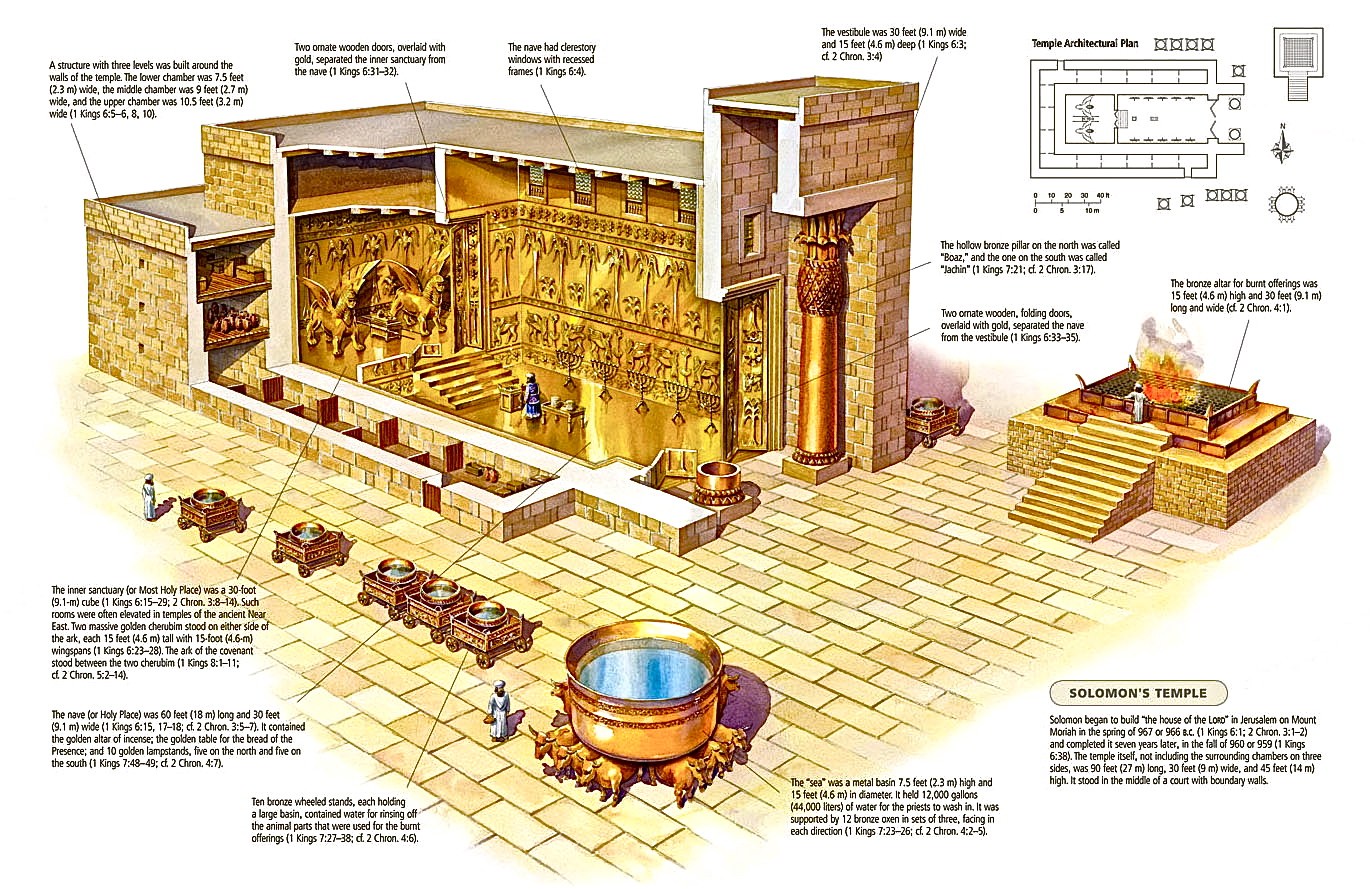 |
|
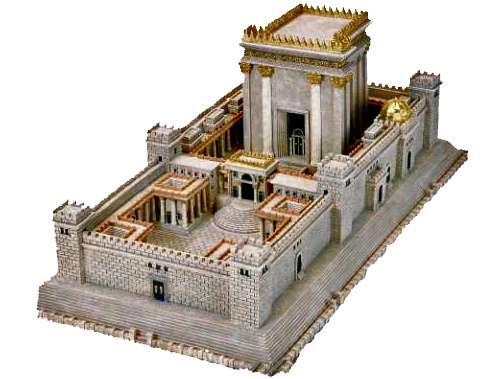 |
 |
|
'TEMPLE' by Robert Cornuke |
|
Amazing new discoveries that change
everything about the location of Solomon’s Temple |
| In a book that is being heralded as an “investigative masterpiece”
with outstanding archeological and prophetic implications,” TEMPLE, by
Robert Cornuke, presents a compelling case that Solomon’s Temple was
never built on the Temple Mount in Jerusalem, rather, approximately a
quarter-mile south in the City of David. |
 |
Cornuke, president of the Bible Archaeology Search and Exploration
(BASE) Institute, has participated in over 50 expeditions searching for
lost locations described in the Bible. He states, “After several years
of biblical research sparked by the writings of the late Dr. Ernest L.
Martin, personal investigation, and the study of ancient documents, I
have come to the conclusion that the temple built by Solomon was not
located where tradition teaches. This has tremendous implications
regarding end time events.”
Being more specific, the author says: “The greatest archeological
blunder in all history has occurred by misplacing Solomon’s Temple on
the Temple Mount rather than its correct location within the City of
David.”
Noted Bible teacher Chuck Missler, who recently accompanied Cornuke to
the excavation site in the Kidron Valley, states, “At first I was a
skeptic, but the overwhelming evidence has convinced me of the true
Temple location. This book is a must read for anyone who wants to fit
together the pieces of biblical history, current geo-politics, and
prophecy. |
 |
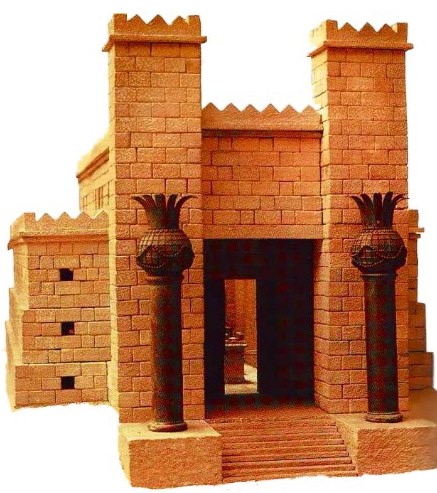 |
Dr. William P. Welty, of La Mirada, California, says, “One
politically explosive implication of this evidence is that those who
wish to rebuild the Jerusalem Temple can now do so without disturbing
the Muslim-controlled real estate called the ‘Temple Mount,’ but
construct it on its true ancient site.” University lecturer, Dr. Frank
Turek, states, “I have been to the site with the author and,
astoundingly, everything fits together biblically and historically.”
The book details research indicating that what was built on the present
Temple Mount was actually Fort Antonia, which housed the Roman garrison.
This implies that the historic “Wailing Wall” was never part of
Solomon’s Temple, but connected to the fortress. Says Cornuke, “It is
understandable that many would rather cling to tradition than be open to
new evidence.” He adds, “My purpose in writing this book is simply to
present the facts, open the doors to a healthy discussion, and let the
evidence and the Bible be the final mediator of these important issues.”
TEMPLE is published by LifeBridge Books (ISBN 978-1-039779-09-0) and is
available in paperback and ebook formats. |
|
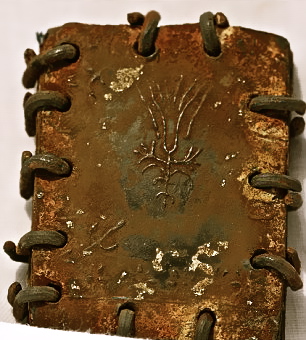 |
 |
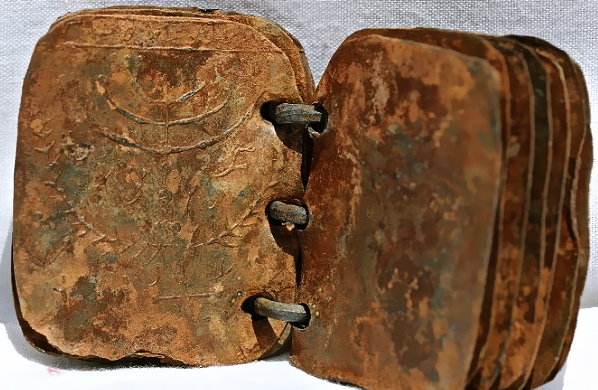 |
Revelation: Experts speculate that
the tablets could be the lost collection of codices referred to in the
Bible's Book Of Revelation
Seventy Metal Books
The books were discovered five years ago in a cave in a
remote part of Jordan to which Christian refugees are known to have fled
after the fall of Jerusalem in 70AD. Important documents from the same
period have previously been found there. Initial metallurgical tests
indicate that some of the books could date from the first century AD.
They could prove as pivotal as the discovery of the Dead Sea
Scrolls in 1947. |

The cave in Jordan where the artifacts were discovered |
Adding to the intrigue, many of the books are sealed, prompting
academics to speculate they are actually the lost collection of codices
mentioned in the Bible’s Book Of Revelation. Dr Margaret Barker, a
former president of the Society for Old Testament Study, said: ‘The Book
of Revelation tells of a sealed book that was opened only by the
Messiah'.
But the mysteries between their ancient pages are not the books’ only
riddle. Today, their whereabouts are also something of a mystery. After
their discovery by a Jordanian Bedouin, the hoard was subsequently
acquired by an Israeli Bedouin, who is said to have illegally smuggled
them across the border into Israel, where they remain.
However, the Jordanian Government is now working at the highest levels
to repatriate and safeguard the collection. Philip Davies, emeritus
professor of biblical studies at Sheffield University, said there was
powerful evidence that the books have a Christian origin in plates cast
into a picture map of the holy city of Jerusalem. |
|
 |
|

 |
Woolly Mammoth to be Brought Back to Life from Cloned
Bone Marrow 'Within Five Years' (December 2011)
Scientists believe it may be possible to clone a woolly
mammoth within five years after finding well-preserved bone marrow in a
thigh bone recovered from permafrost soil in Siberia.
By replacing the nuclei of egg cells from an elephant with those taken
from the mammoth's marrow cells, embryos with mammoth DNA can be
produced, citing the researchers.
The scientists will then plant the embryos into elephant wombs for
delivery as the two species are close relatives, the report said.
Securing nuclei with an undamaged gene is essential for the nucleus
transplantation technique, it said.
Mammoths became extinct about 10,000 years ago.
Global warming has thawed ground in eastern Russia that is usually
almost permanently frozen, leading to the discoveries of a number of
frozen mammoths, the report said. |
|

